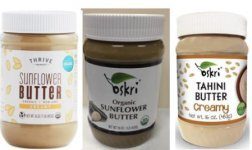Data published by the USDA Food Safety and Inspection Service (FSIS) investigate the frequency of Salmonella-positive chicken carcasses affects the prevalence of Salmonella-positive chicken parts samples across slaughter establishments. The regression analysis performed suggested a slight negative relationship between the prevalence of Salmonella-positive chicken parts in slaughter establishment and the use of peracetic acid on carcasses. The analysis also suggested a large positive relationship between prevalence of Salmonella-positive chicken parts and carcasses. However, the regression model has very limited predictive value. After adjusting for errors in the observed results, the estimated correlation of the frequency of Salmonella-positive chicken carcass and parts is 0.54. According to the researchers, this implies a moderate degree of relatedness between contaminated carcasses and parts. Pathogen interventions should reduce the correlation of prevalence, they concluded. @ https://www.sciencedirect.com/science/article/pii/S0956713518306315?dgcid=rss_sd_all
ruth
Understanding how changes in the prevalence of Salmonella-positive chicken carcasses affects the prevalence of Salmonella-positive chicken parts sampl…
ruth
On Friday, Hy-Vee grocery shops recalled cheesecakes mixes made with Diamond Crystal Brands cheesecake mix due to possible salmonella contamination. The products recalled include 32 types of cheesecakes in 8-ounce and 32-ounce packages, with use by dates of Dec 6. 2018 through Jan. 11, 2019. The cheesecakes were sold in several stores in Iowa, Illinois, Missouri, Kansas, Nebraska, South Dakota, Minnesota, and Wisconsin. Diamond Crystal Brands notified Hy-Vee of the potential contamination. @ https://fox4kc.com/2019/01/04/hy-vee-issues-voluntary-recall-of-cheesecakes-due-to-possible-salmonella-contamination/
DES MOINES, Iowa — Hy-Vee has issued a voluntary recall of cheesecakes made with Diamond Crystal Brands cheesecake mix due to possible salmonella contamination, the company announced Friday.
The recall includes 32 types of cheesecakes in 8-ounce and 32-ounce packages. The packages have use by dates of Dec 6. 2018 through Jan. 11, 2019.
ruth
The FDA announced that Oskri Organics Corporation of Lake Mills, WI recalled their Organic Sunflower Butter Lot # 099, Tahini Butter LOT # 193 and Thrive Sunflower Butter LOT # 233, due to potential contamination with Listeria monocytogenes. 2 Jars of Oskri Organic Sunflower Butter LOT #099 was distributed in Ohio. Oskri Tahini Butter LOT # 193 was distributed in CA, AZ, GA, CT, IN, TX, FL, ID, SC, NH. Thrive Sunflower Butter LOT # 233 was distributed in Indiana. No illnesses have been reported to date. On 12/18/18 the company was informed by a customers a tested sample came back positive for Listeria monocytogenes. @ https://www.fda.gov/Safety/Recalls/ucm629246.htm
Oskri Organics Corporation of Lake Mills, WI is recalling Oskri Organic Sunflower
Butter Lot # 099, Oskri Tahini Butter LOT # 193 and Thrive Sunflower Butter LOT # 233, because it has the potential to be contaminated with Listeria monocytogenes, an organism which can cause serious and sometimes fatal infections in young children, frail or elderly people, and others with weakened immune systems. Although healthy individuals may suffer only short-term symptoms such as high fever, severe headache, stiffness, nausea, abdominal pain and diarrhea, Listeria infection can cause miscarriages and stillbirths among pregnant women.
ruth
{“post_id”:5382,”post_type”:”post”,”shortcode”:”peepso_postnotify”,”permalink”:”https:\/\/ask-bioexpert.com\/blog-post\/food-safety-outbreaks-in-2018-year-in-review\/”}


